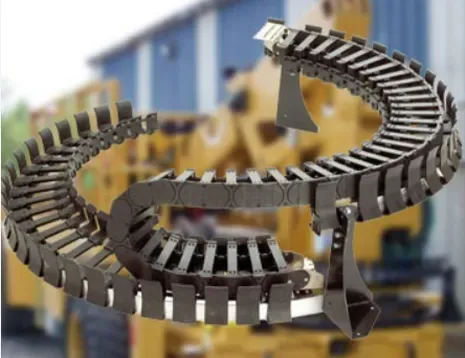corrugated metal conduit
Understanding Corrugated Metal Conduit An Overview
Corrugated metal conduit (CMC) is an essential component in electrical and construction applications, widely appreciated for its durability, flexibility, and moisture-resistant characteristics. With an array of benefits and applications, understanding this specific type of conduit can be pivotal for contractors, engineers, and DIY enthusiasts alike.
What is Corrugated Metal Conduit?
Corrugated metal conduit is typically made from galvanized steel or aluminum, featuring a series of ridges and grooves along its length. This unique corrugated design serves several important functions, including increasing the strength of the conduit while allowing it to bend and flex without cracking or breaking. Unlike traditional rigid conduits, corrugated conduits can easily navigate around obstacles in complex installations, making them particularly valuable in various settings.
Key Features and Advantages
1. Flexibility One of the standout features of corrugated metal conduit is its flexibility. This allows it to be used in applications where traditional rigid conduits might falter due to tight spaces or the need for complex routing. It can be bent by hand or with simple tools, making installation quicker and more efficient.
2. Durability The corrugated structure provides excellent resistance to physical impacts and harsh environmental conditions. This durability makes CMC ideal for outdoor applications or industrial settings where it may be exposed to rough handling, high temperatures, or moisture.
3. Corrosion Resistance When made from galvanized steel or aluminum, corrugated metal conduits exhibit strong resistance to rust and corrosion. This is crucial for maintaining the integrity of electrical systems, especially in environments susceptible to moisture, such as coastal areas or manufacturing plants.
4. Cost-Effectiveness While there may be an initial investment in corrugated metal conduit, the long-term savings are significant. Its durability reduces the need for frequent replacements, and its easy installation can save labor costs.
5. Fire Resistance Metal conduits are inherently fire-resistant. In environments where flammability is a concern, using CMC can enhance safety standards and provide peace of mind.
Applications of Corrugated Metal Conduit
Due to its unique properties, corrugated metal conduit is used in a variety of applications
corrugated metal conduit

- Electrical Installations CMC is primarily used to protect and route electrical wiring, especially in commercial and industrial environments. - Telecommunications Many telecommunication cables benefit from the protection a corrugated metal conduit provides, safeguarding them from environmental hazards.
- Underground Installations The robust structure of CMC makes it suitable for underground applications where it must withstand soil pressure and potential impacts over time.
- Transportation In transportation infrastructure, such as bridges and tunnels, CMC is often utilized to house and protect wiring systems and equipment.
Installation Considerations
While installing corrugated metal conduit is generally straightforward, there are several best practices to ensure safety and efficiency
1. Proper Support Ensure that the conduit is appropriately supported at regular intervals to prevent sagging, especially in long runs.
2. Cutting and Bending Utilize the right tools to cut and bend the conduit without compromising its structural integrity. Dedicated conduit benders can help achieve smooth bends, minimizing stress points.
3. Sealing Joints To enhance moisture resistance, consider using sealing compounds at the joints where two pieces of conduit connect. This practice is especially vital in outdoor installations.
4. Grounding In electrical applications, ensure that the conduit is grounded properly to prevent electrical noise and enhance safety.
Conclusion
Corrugated metal conduit represents a versatile and durable option for managing electrical and telecommunications wiring. Its unique combination of flexibility, strength, and resistance to environmental challenges makes it an ideal choice for various applications. Understanding its features, benefits, and proper installation techniques can aid in selecting the right conduit for any project, ensuring both safety and efficiency in electrical installations. As industries continue to evolve, CMC remains a vital component in promoting reliable and secure infrastructure.








